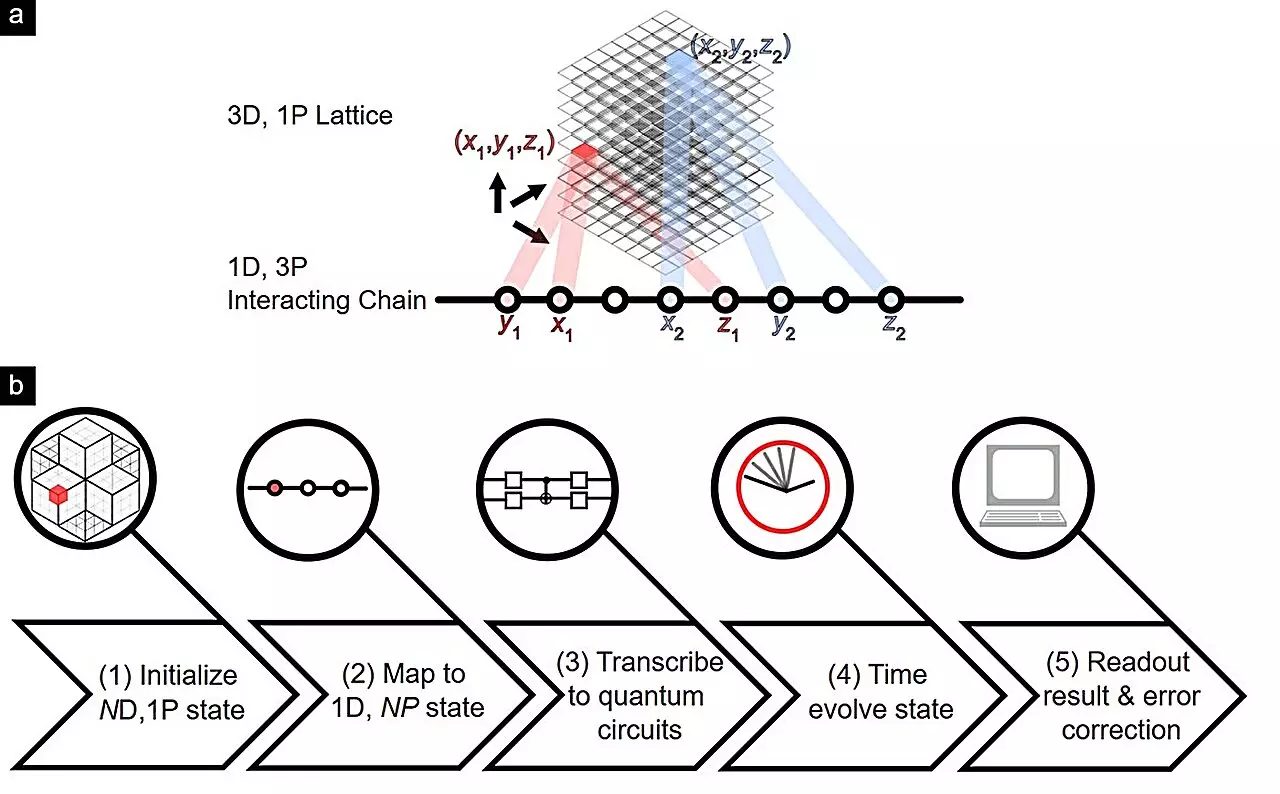Exploring the world of quantum materials has always been a fascinating journey for physicists and engineers. The discovery of topological insulators, which conduct electricity only on their surface or edges, has opened up a new realm of possibilities in technological applications. These materials offer robust quantum states that are highly sought after in various industries.
Researchers at the National University of Singapore (NUS) have made a groundbreaking discovery by successfully simulating higher-order topological (HOT) lattices using digital quantum computers. This achievement has allowed them to delve deeper into the complex lattice structures of advanced quantum materials with unprecedented accuracy.
Led by NUS Assistant Professor Lee Ching Hua, the research team has developed a scalable approach to encode large, high-dimensional HOT lattices into simple spin chains using many-body quantum interactions. By leveraging the power of quantum computer qubits, they have maximized the storage of information while minimizing resource requirements in a noise-resistant manner.
The findings of this research, published in the journal Nature Communications, mark a significant milestone in the field of material engineering. The team’s innovative approach has enabled them to explore the intricate signatures of topological materials on quantum computers with unparalleled precision, surpassing previous limitations.
Despite the constraints of current noisy intermediate-scale quantum (NISQ) devices, the researchers have successfully measured topological state dynamics and protected mid-gap spectra of higher-order topological lattices with remarkable accuracy. This achievement has been made possible through the implementation of advanced error mitigation techniques developed in-house.
The ability to simulate high-dimensional HOT lattices using digital quantum computers has opened up a myriad of research directions in quantum materials and topological states. This breakthrough paves the way for true quantum advantage in the future, promising exciting advancements in material engineering and quantum technology.
The groundbreaking research conducted by the NUS team has shed light on the immense potential of simulated higher-order topological lattices in advancing our understanding of quantum materials. This remarkable feat represents a significant step forward in the exploration of topological states of matter and their practical applications in various industries.



Leave a Reply